The radula is an anatomical structure used by mollusks for feeding, sometimes compared to a tongue. It is a minutely toothed, chitinous ribbon, which is typically used for scraping or cutting food before the food enters the esophagus. The radula is unique to the mollusks, and is found in every class of mollusk except the bivalves, which instead use cilia, waving filaments that bring minute organisms to the mouth.

The Cocculinoidea is a superfamily of deepwater limpets, the only superfamily in the order Cocculinida, one of the main orders of gastropods according to the taxonomy as set up by. The clade Cocciliniformia used to be designated as a superorder.

Hydrocenidae is a taxonomic family of minute land snails or cave snails with an operculum, terrestrial gastropod mollusks or micromollusks in the clade Cycloneritimorpha.

Fissurellidae, common name the keyhole limpets and slit limpets, is a taxonomic family of limpet-like sea snails, marine gastropod molluscs in the clade Vetigastropoda. Their common name derives from the small hole in the apex of their cone-like shells. Although superficially resembling "true" limpets, they are in fact not closely related to them.
Stomatellinae is a subfamily of small sea snails with a brilliantly nacreous interior of the shell, marine gastropod mollusks in the family Trochidae, the top snails.

Pseudococculinidae is a family of small sea snails or false limpets, marine gastropod mollusks in the superfamily Lepetelloidea.

Perotrochus is a genus of large sea snails with gills and an operculum, marine gastropod mollusks in the family Pleurotomariidae, the slit snails,.
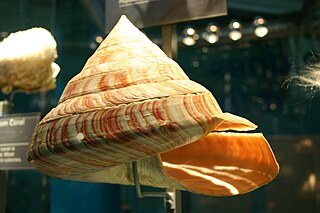
Pleurotomariacea is one of two names that are used for a taxonomic superfamily of sea snails that are an ancient lineage and are well represented in the fossil record. The name Pleurotomariacea is used by paleontologists, who, because they usually have only the hard parts of mollusks to study, often use a slightly different scheme of classification from that used by scientists who study living mollusks.

Vetigastropoda is a major taxonomic group of sea snails, marine gastropod mollusks that form a very ancient lineage. Taxonomically the Vetigastropoda are sometimes treated as an order, although they are treated as an unranked clade in Bouchet and Rocroi, 2005.
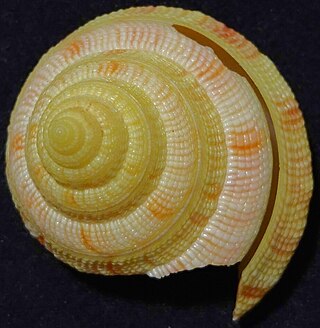
Entemnotrochus rumphii, common name the Rumphius' slit shell, is a species of large sea snail with gills and an operculum, a marine gastropod mollusk in the family Pleurotomariidae, the slit snails.

Pleurotomarioidea is a superfamily of small to large marine gastropods included in the order Pleurotomariida of the subclass Vetigastropoda.

Entemnotrochus adansonianus, common name Adanson's slit shell, is a species of sea snail, a marine gastropod mollusk in the family Pleurotomariidae.
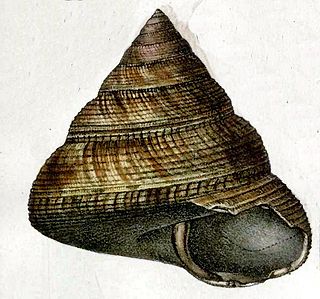
Mikadotrochus beyrichii, common name Beyrich's slit shell, is a species of sea snail, a marine gastropod mollusk in the family Pleurotomariidae.
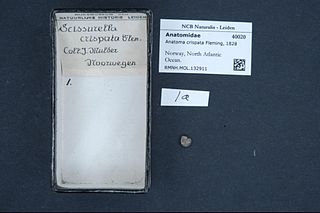
Anatoma crispata is a species of minute sea snail, a marine gastropod mollusk or micromollusk in the family Anatomidae.

Pleurotomaria is an extinct genus of sea snails, marine gastropod molluscs in the family Pleurotomariidae.

Calliostoma cinctellum is a species of sea snail, a marine gastropod mollusk in the family Calliostomatidae.

Bayerotrochus teramachii, is a species of sea snail, a marine gastropod mollusc in the family Pleurotomariidae.

Perotrochus deforgesi is a species of large sea snail, a marine gastropod mollusk in the family Pleurotomariidae, the slit snails.
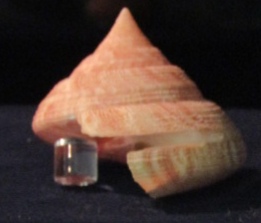
Perotrochus maureri is a species of large sea snail, a marine gastropod mollusk in the family Pleurotomariidae, the slit snails.

Perotrochus quoyanus is a species of large sea snail, a marine gastropod mollusk in the family Pleurotomariidae, the slit snails.

















